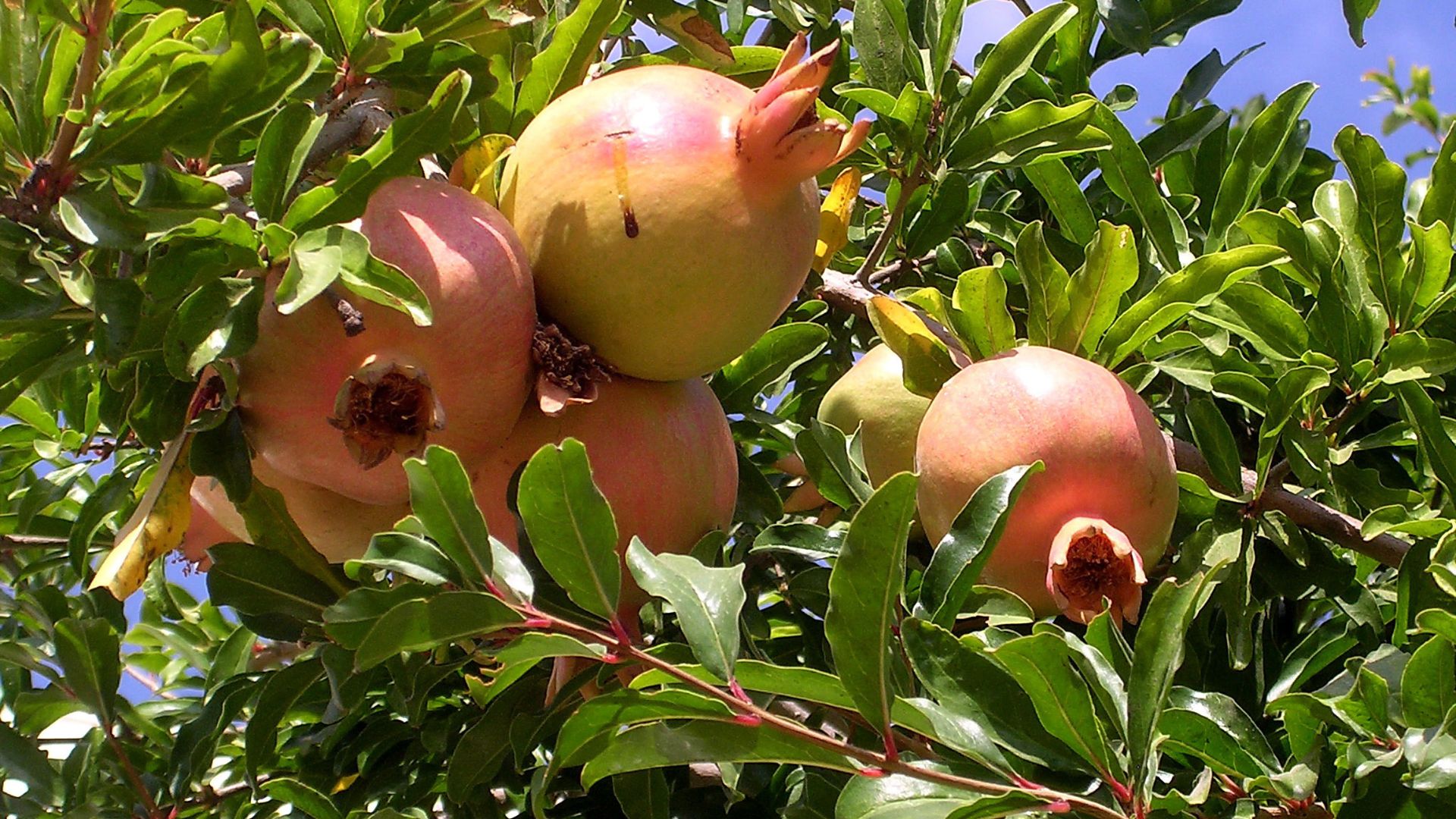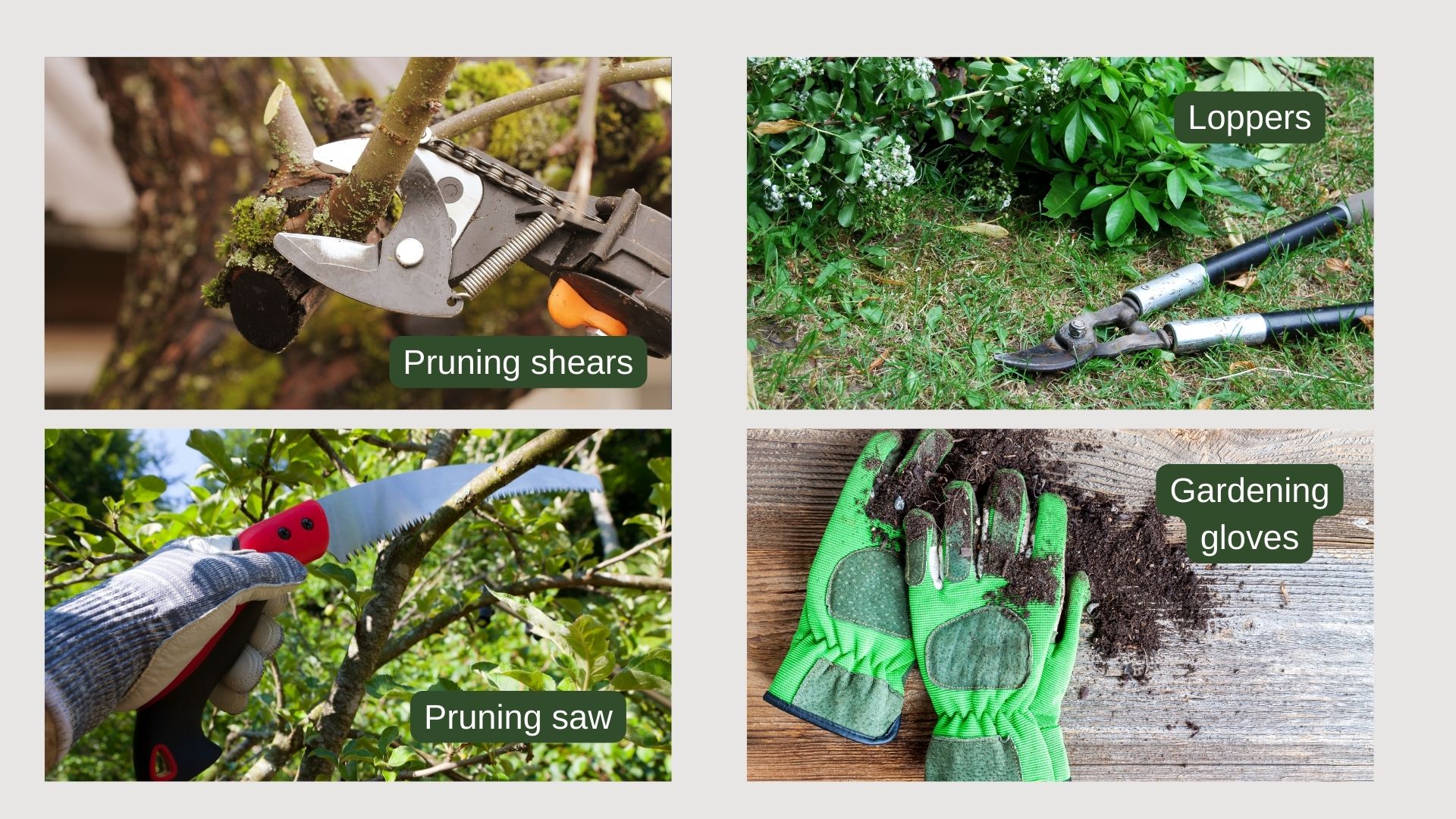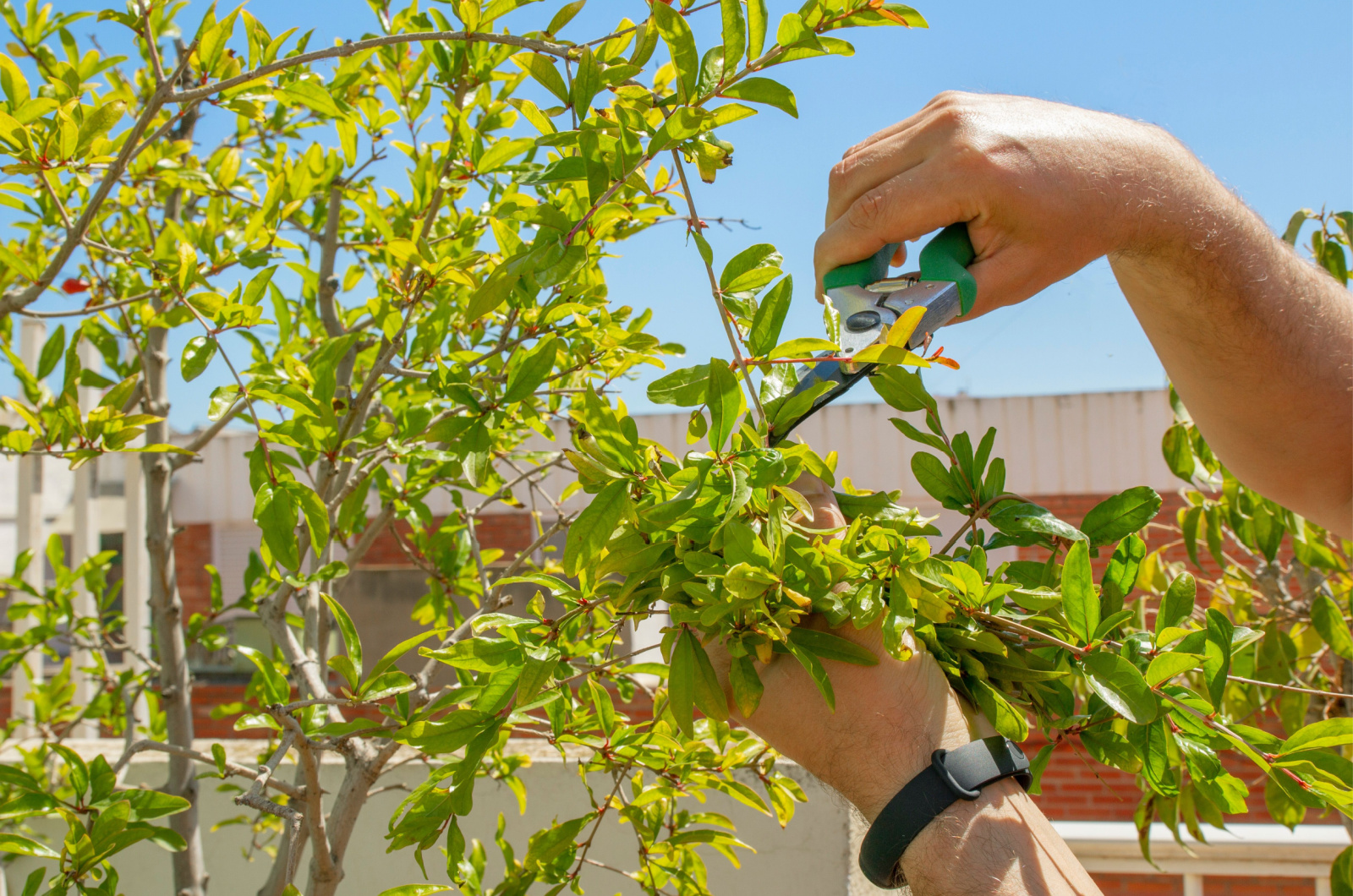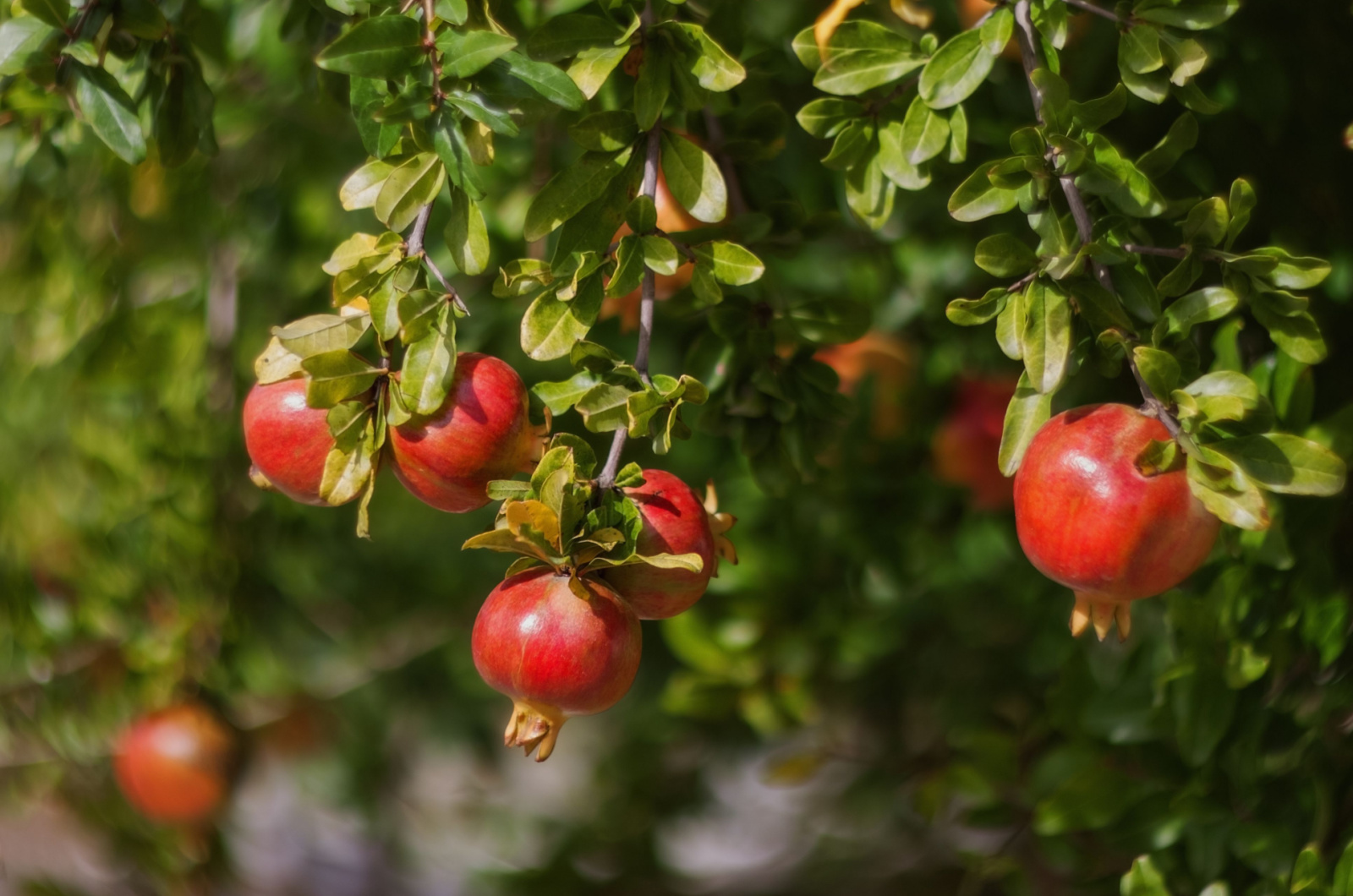Pomegranates are hardy and fuss-free plants. Yet, even they have some requirements. One of those needs is pruning.
You don’t have to trim your pomegranate shrubs and trees often. Although, doing it twice a year will leave you with a huge harvest.
Here is everything you need to know about this chore!
Let’s get started!
Tools You’ll Need
You won’t need many tools to give your pomegranates a nice prune. Pruners, loppers, and a saw are quite enough.
Make sure you clean and sterilize the equipment before you start pruning. This will prevent transferring any diseases onto your healthy pomegranate trees.
Sharpen the tools to reduce the damage you cause, and that’s it.
Also make sure to use protective equipment, such as gloves, long sleeves, and goggles. Pomegranate bushes and trees have thorns, and safety clothes will minimize pricks.
Pruning Pomegranate Trees
Established pomegranate trees don’t need a lot of pruning. But in the first 2 years, you should develop their shape. You can train them as a single or multi-stemmed tree.
For a single-stemmed tree, remove all branches but the strongest one. And if you want multi-stemmed pomegranates, choose a couple of strong shoots and prune the rest.
In the second and third year of growth, cut back all side shoots by a third. This will make your tree bushier. And don’t forget to prune away all growth from the bottom third of the trunk.
Once your tree establishes, the pruning process becomes very simple. Trim your pomegranates during their dormancy – at the end of winter or the beginning of spring. Here are the three steps to guide you:
Step 1. Remove all diseased, dead, or damaged branches. This will breathe life into your tree.
Step 2. Open it up by thinning dense areas of over-crowded and crossing limbs and shoots.
Step 3. Keep the remaining branches balanced and tidy. This will encourage bushy growth and huge crops.
The other time of the year you should prune your pomegranate trees is in summer. These plants grow many water sprouts that you should remove.
They take your tree’s energy and prevent it from producing bumper crops. Get rid of these sprouts (aka suckers) at least once a year.
Trimming For Larger Fruit Production
If your goal is to have a huge yield, then you should focus on having as many productive pomegranate branches as possible.
These trees bear most fruit on 2-3-year-old growth. That’s why you should ensure that your tree has a balanced combo of one, two, and three-year-old branches.
Remove old and unproductive branches so that there’s enough room for the new ones. Anything older than 4-5 years should go. Selective pruning of these old limbs ensures that the young ones get more energy and room to grow and develop.
Trimming the tips of younger branches will encourage them to produce more new growth. Make the cuts at a 45° angle a little above the bud. This will promote outward bushy growth.
When pruning your pomegranate trees to increase production, make sure to open up the center. It will allow air and sunlight to get to the innermost parts. This technique reduces the risk of fungal diseases and promotes more fruiting in the middle of the tree.
Remove all branches that grow inwards. Prune away downward-growing shoots because they will droop under a heavy load. If the fruit touches the soil, it will start to rot.
Once you finish pruning, you can mulch your pomegranate trees to suppress weed growth and enhance moisture retention.
Warning: Don’t apply mulch too close to the tree trunk or it may start rotting.
Is It Possible To Over Prune Pomegranates?
Yes, it is possible to over prune your pomegranates. Hard pruning will reduce the yield and weaken the tree as a whole.
To avoid this, always aim to remove up to a third of the entire growth. This will keep your pomegranate tree healthy, strong, and productive.
Remember, pomegranates need light pruning twice a year to thrive.





